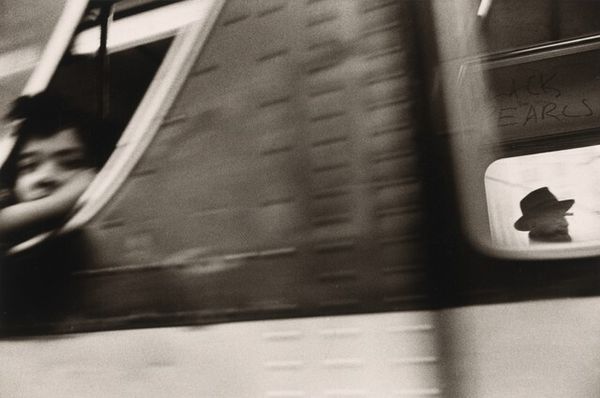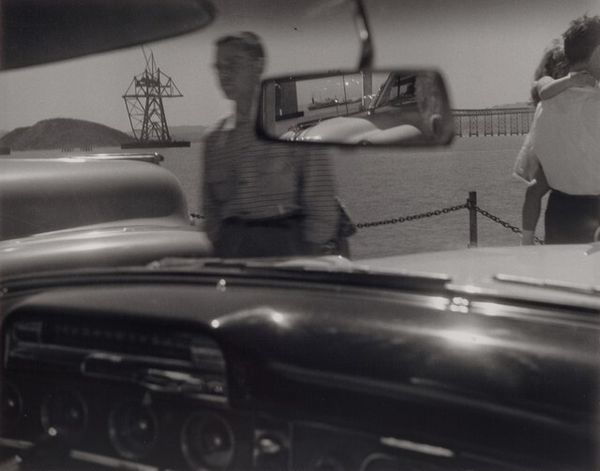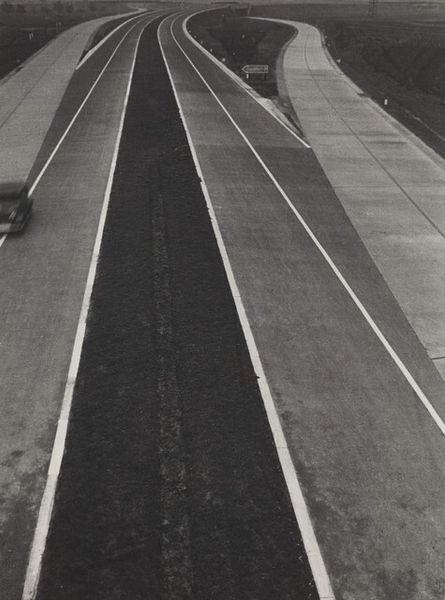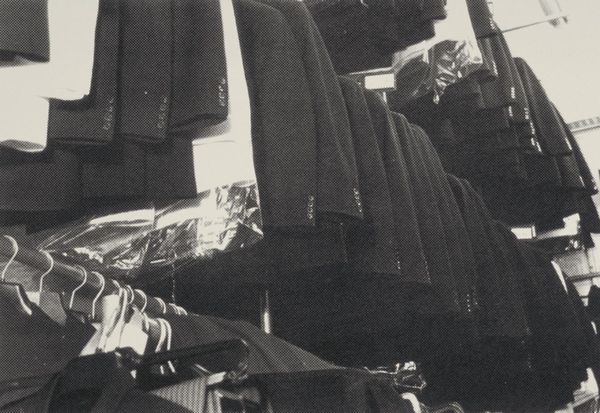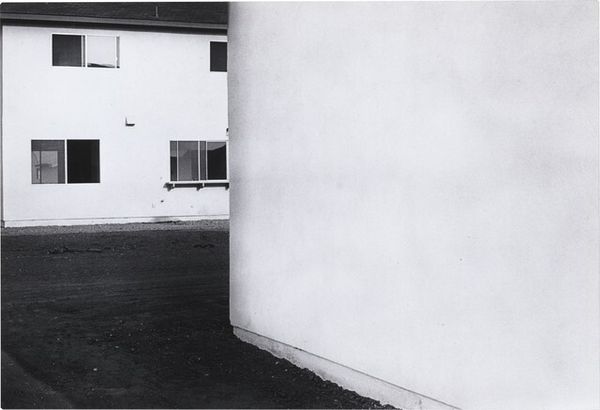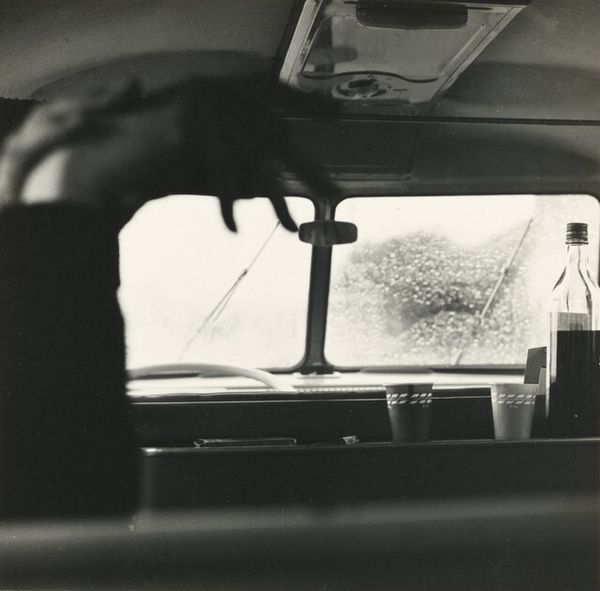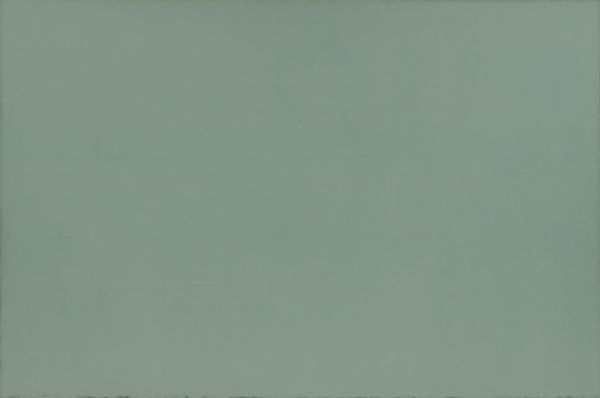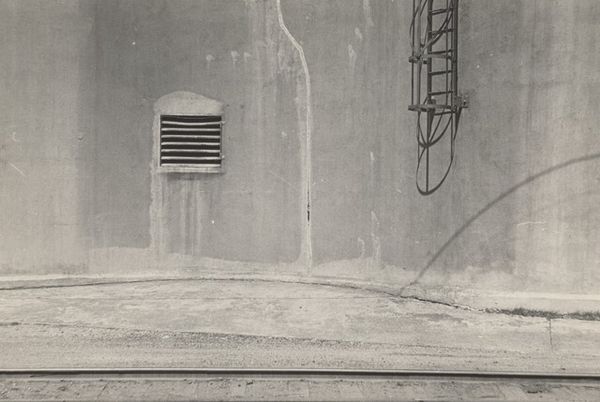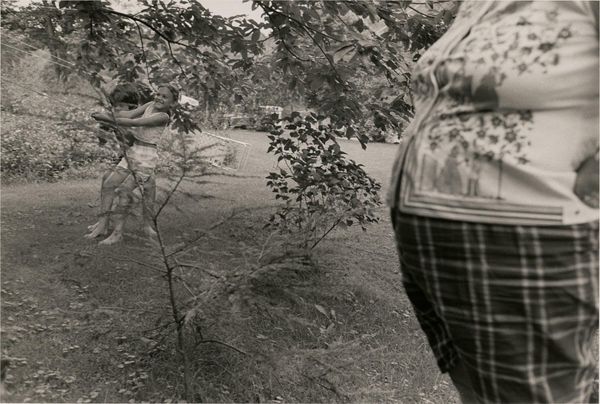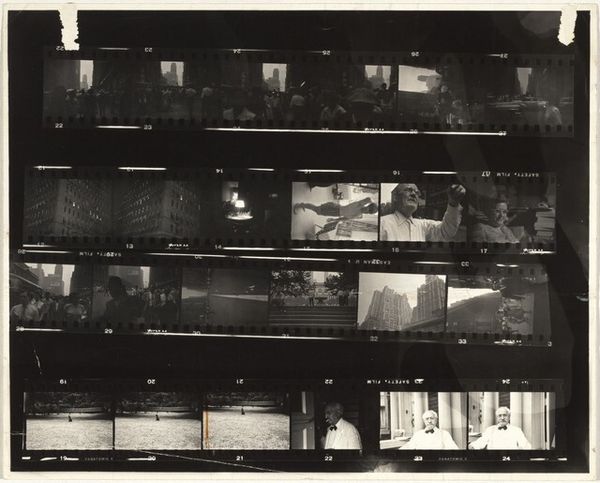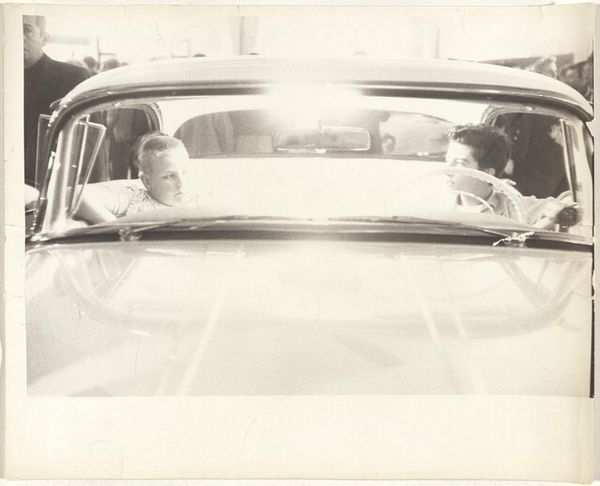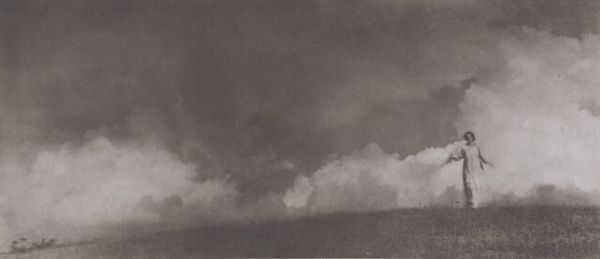
photography
#
abstract-expressionism
#
street-photography
#
photography
#
cityscape
#
modernism
#
realism
Dimensions: overall (sheet, trimmed to image): 19.1 x 24.2 cm (7 1/2 x 9 1/2 in.) mat: 35.56 x 45.72 cm (14 x 18 in.)
Copyright: National Gallery of Art: CC0 1.0
Curator: Let’s discuss Harry Callahan's 1948 photograph, "Chicago." At first glance, it’s deceptively simple: a stark brick wall looms above a row of parked cars. Editor: My immediate feeling is claustrophobia. That wall presses down. It’s this overwhelming gray mass, broken only by a vent. The cars seem trapped, dwarfed by this brutal urban landscape. Curator: It’s fascinating how Callahan plays with scale and perspective. The image was created during the mid-century modernist movement, a period defined by dramatic change in civic construction and urban living. It makes you think about the impact of urbanization, doesn't it? Editor: Absolutely. This image highlights that constant interplay of concrete and the automotive industry in post-war America, focusing our attention to its raw materials: brick and metal. There's a definite lack of human presence beyond these parked and produced objects. Curator: I agree. And consider that the vast, almost monotonous texture of the wall contrasts with the distinct forms of the cars. It's almost a meditation on the individual versus the system. What does the image suggest about progress and human nature under modernism? Editor: Well, I see it as a portrait of American materialism. Callahan deliberately includes details highlighting production processes and construction materials, subtly exploring themes of industry and consumption during a period when commodity production and consumerist culture truly hit their stride. Curator: Callahan was really trying to show us that ordinary life held hidden layers of abstraction. It urges us to find beauty, or perhaps unease, in the everyday environments that surround us. Editor: I suppose that there’s value in taking time to consider Callahan's technical precision and what these mundane, utilitarian things – like bricks and cars – really communicate about us and our society. Curator: Exactly! It certainly gives you a lot to reflect on. Editor: Yes, seeing the city through Callahan's lens brings new meaning to our experience of industrial material and design, encouraging consideration of progress and social context through manufactured things.
Comments
No comments
Be the first to comment and join the conversation on the ultimate creative platform.
